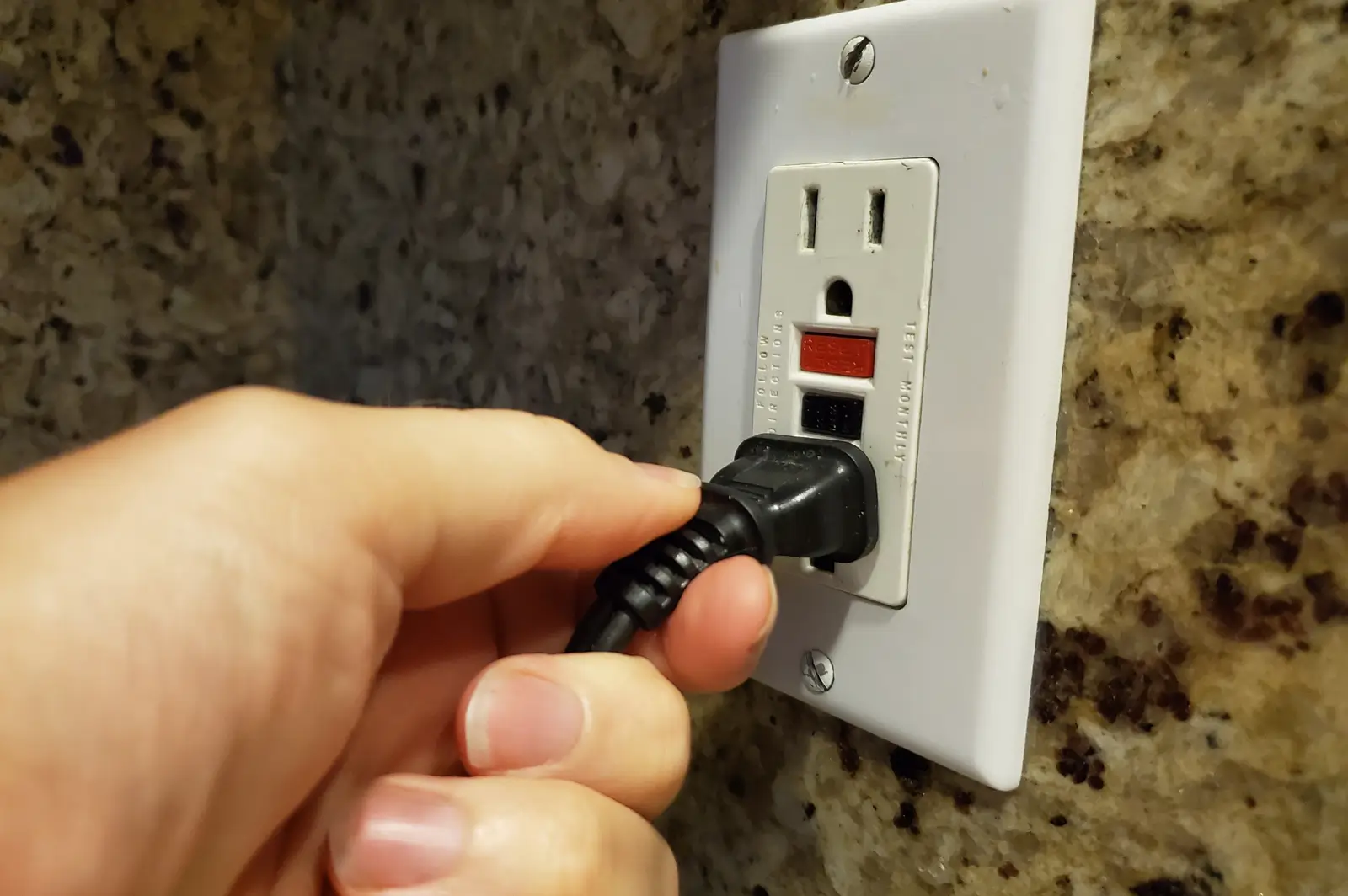
Mr. Electric explains how to troubleshoot common GFCI outlet issues.
|
With building codes now requiring GFCI (Ground Fault Circuit Interrupter) outlets in many areas of your home, you’ve likely encountered or installed them in areas such as bathrooms, kitchens, and outdoor outlets. GFCI outlets are designed to enhance safety by tripping the circuit when irregular electricity flow is detected, offering an additional layer of protection compared to standard outlets. If you're unfamiliar with how they work or why your GFCI isn't functioning properly, Mr. Electric has the answers to all of your GFCI questions.
1. My GFCI Outlet Makes a Weird Buzzing Noise—Is It Dangerous?
If your GFCI outlet is making a buzzing noise, it could be due to a number of reasons. A common cause is simply performing a reset on the outlet. GFCIs have two buttons—labeled "test" and "reset"—and often, when you reset the outlet, it can make a buzzing sound as the circuit resets. If you haven’t recently reset the outlet, or the buzzing continues after resetting, the cause could be something more serious. This could indicate improper installation or faulty wiring, which can create a safety risk. If the buzzing persists, it’s crucial to reach out to a local electrician for a thorough inspection and proper diagnosis of the issue.
2. What Can I Do if My GFCI Outlet Can't Keep Plugs In?
If your GFCI outlet won’t hold plugs in, it could be a simple problem that’s easy to fix. First, ensure the circuit is turned off at the panel box to avoid any electrical hazards. One common reason for plugs not staying in place is the presence of a tamper-resistant mechanism inside the outlet. These outlets are designed to keep debris and foreign objects from entering. Occasionally, the tamper-resistant covers might malfunction or push against the plugs. If the outlet is brand new, the difficulty in plugging items in may simply be a matter of the new outlet becoming more functional over time with continued use.
In some cases, the outlet may be defective or improperly installed. If the plugs continue to fall out or don’t fit properly, it may be time to replace the outlet. A qualified electrician can help you address this issue, ensuring that your outlet is safe and secure for everyday use.
3. My GFCI Outlet Trips Randomly—Do I Need to Replace It?
A GFCI outlet is designed to trip when there’s a fault in the circuit, but random tripping can signal a more significant issue. Common causes for a GFCI tripping without an obvious reason include moisture entering the outlet box, defective appliances causing overloading, and faulty wiring systems. If the problem is moisture-related, such as water getting into the outlet box, you’ll need to address the source of moisture and ensure the box is properly sealed. However, if an overloaded circuit or faulty wiring is causing the tripping, you may need to replace the outlet, appliance, or wiring to resolve the issue. It’s best to consult a professional for a proper diagnosis.

4. What Should I Do if My GFCI Outlet Keeps Tripping When It Rains?
If your outdoor GFCI outlet keeps tripping during rain, it’s likely due to water entering the outlet box. Outdoor outlets are required to be covered to protect them from moisture, but over time, the seal on these covers can wear out. If water is seeping in and causing your outlet to trip, it's a sign that the cover’s seal isn’t doing its job, and it may need to be replaced. Additionally, if your roof has a leak or the wiring itself has been damaged, this moisture could overload the circuit, causing your GFCI to trip. Ensuring that the outlet is properly sealed and checking for any water-related issues is crucial.
5. Why Is My GFCI Outlet Not Resetting?
One of the most frustrating issues homeowners face with GFCI outlets is when the reset button won't engage. This can be caused by a number of factors, including a persistent electrical fault, a malfunctioning GFCI, or an overload in the circuit. If your outlet won’t reset, it’s important to troubleshoot by checking for any obvious electrical issues like overloaded circuits or damaged appliances. If you can’t identify the problem, the issue could lie within the GFCI outlet itself, which may need to be replaced.
6. Why Is My GFCI Outlet Tripping with Nothing Plugged In?
If your GFCI outlet keeps tripping even when nothing is plugged in, the issue could be related to a defective GFCI outlet or an underlying wiring problem. This type of issue should not be ignored, as it may indicate a safety hazard. If it’s the wiring causing the problem, it's important to have it addressed immediately by a qualified electrician to prevent further complications. A malfunctioning GFCI outlet should be replaced to restore the safety and functionality of your home’s electrical system.
7. Can a GFCI Outlet Be Installed in Any Room?
GFCI outlets are required by building codes in areas where electricity and water are likely to come into contact, such as kitchens, bathrooms, basements, and outdoor spaces. However, many homeowners opt to install them in other areas of the home for added safety. It’s important to check local codes and consult with a professional to determine if GFCIs should be installed in additional rooms, such as garages or laundry rooms, based on potential electrical hazards.

8. Do GFCI Outlets Go Bad?
Yes, GFCI outlets can go bad over time, especially when exposed to the elements. Corrosion can occur, particularly in outdoor outlets, where moisture and weather conditions take their toll on metal components. Like all outlets, GFCIs should be replaced after a certain period, as the internal components can wear out. If you’re dealing with a faulty outlet, it’s important to replace it as soon as possible to avoid electrical hazards. To ensure the installation is done safely and correctly, we highly recommend calling a local service professional. Proper installation will help you avoid safety risks and ensure your outlet works as intended.
9. How Do I Know If My GFCI Outlet Needs to Be Replaced?
GFCI outlets are built to last, but over time, they can become unreliable. Common signs that your GFCI outlet may need replacing include frequent tripping, inability to reset, visible damage, or failure to protect from ground faults. Additionally, if you notice any scorch marks, buzzing noises, or if the outlet feels warm to the touch, it’s time to replace the GFCI. While some minor issues can be fixed, replacing a faulty GFCI outlet is crucial to maintaining electrical safety in your home.
Trust Mr. Electric for All Your GFCI Issues
While it may seem tempting to replace a GFCI outlet yourself, improper installation or DIY repairs can lead to serious electrical issues down the road. Trust the service professionals at Mr. Electric to diagnose and resolve your GFCI problems efficiently. Whether it’s outlet replacement, an inspection, or upgrading to new safety solutions, we’re here to help. Call your local Mr. Electric professional today or schedule an appointment online to ensure your GFCI outlets are functioning safely and properly.
This article is intended for general informational purposes only and may not be applicable to every situation. You are responsible for determining the proper course of action for your home and property. Mr. Electric is not responsible for any damages that occur as a result of this blog content or your actions. For the most accurate guidance, contact the Mr. Electric location nearest you for a comprehensive, on-site assessment.

